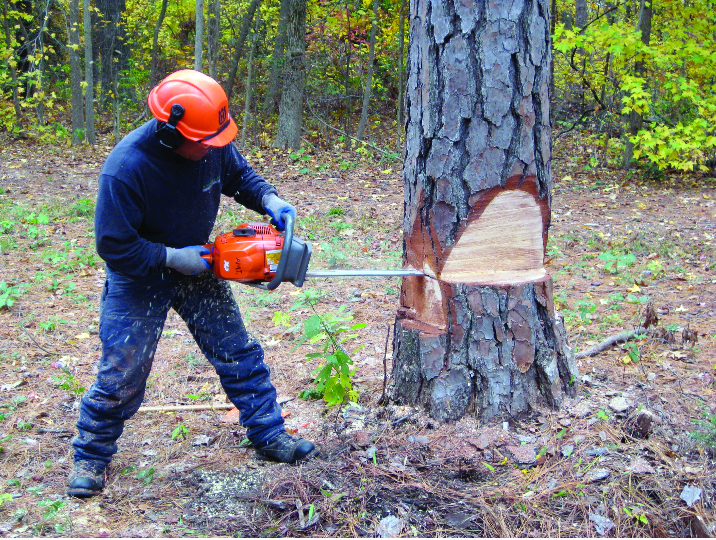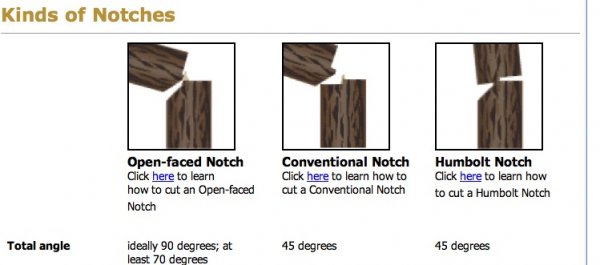different types of felling cuts
This is the first cut you will make. Cut leaving enough holding wood on the back side of the tree.

Understanding Directional Felling Husqvarna Chainsaw Academy
The back cut is known as the wedge and this is what allows the tree to start falling under its weight.

. It is best suited for larger chainsaws due to the large bar size. The back cut should stop before completely cutting through the tree leaving approximately an inch of wood. Pin On Tree Felling This cut should be made about 3 inches above the bottom of the V-shaped cut.
The technique used for making the felling cut depends on the thickness of the trunk and the length of the guide bar. 22 Undercut or Bottom Cut. It is most often used for cutting awkward features in a variety of building materials.
The directional notch determines the direction of fall and you fell the tree with the felling cut. Run the saw at full power and do not let the chain bind. Old loggers Felling technique used to keep trees on the stumps when being.
What makes the difference between these types of notches. 25 Conventional Directional Notch. Continue to saw backwards until two-thirds of the trunk is sawn.
The notch created by the top and bottom cuts in the picture above is called an Open-face Notch You can compare this notch with the Humbolt and Conventional Notches. It is easier this way to make the two. Highlights of Manual Felling Techniques.
The wood that is not cut is referred to. 3 Using a Chainsaw to Cut a Notch and Hinge. Different types of shovel handles are available on shovels and each has its own set of benefits.
Make your top cut first. Despite the fewer teeth this type of chain sequence is incredibly effective at cutting through wood and doing so quickly thanks to a fast speed of operation. What Are the Different Types of Tree Felling Cuts and Notches.
The felling wedge provides greater felling force than the different types of breaking bar. Start by making a bore. This cut should be made about 3 inches above the bottom of the V-shaped cut.
The back cut or felling cut is made on the opposite side of the tree of the undercut and is cut through the base of the tree severing the hinge holding the tree up. The felling cut will normally be level with or slightly above the level of the directional notch. Then release the tree from the back side with a cut below the bore cut.
Special techniques are used for difficult trees. The foot breaking bar is suitable for small trees when thinning. Sizeup Search For Overhead Hazards Debris Falling From Above Causes Over One-half Of All Felling Accidents Practice Watching Overhead While Cutting Occasionally Glance At The Saw Kerf And Top Of The Tree Check For Snags Standing Dead Or Dying Tree Snags May Fall At Any Time Due To Wind Or Vibration From A Felled Tree Cut Any Snags In The Felling Area First.
Undercut or Bottom Cut. The technique used for making the felling cut depends on the thickness of the trunk and the length of the guide bar. The felling axe can cut laterally or downward so the cut can be against or with the grain.
It is important to have even alignment where the top and bottom cut meet. The condition of the tree the terrain and local tradition. TREE FELLING TECHNIQUES MANUAL.
If you make the back cut to a point where it meets the tip of the first two cuts. Take a look at How to make a felling cut to view different types of felling cuts. 23 Back Cut or Felling Cut.
Once you have chosen a tree to cut down you should decide what direction you want it to fall. Different types of felling cuts Tuesday February 15 2022 Edit. Also called a jab saw pad saw drywall saw or alligator saw this type of woodcutting tool is characterized by being long narrow and relatively small.
26 Humboldt Directional Notch. There are three types of basic cut you will use to fell a tree. 21 Top Cut.
Remember to saw right to the hinge width. The undercut or notch cut is the guiding or aiming slot for the tree and is a V-shaped notch placed on the side of the tree in the direction of intended fall. An undercut must be made in each tree being felled.
A full component chain arrangement features a bar of at least 24-inches and fewer teeth than other chain types. Move to the other side of the tree and make the felling cut which is horizontal a couple of inches above the. 23 Back Cut or Felling Cut.
Keyhole saws are designed for cutting both metal and wood. Direction Different From The Trees Natural Lean Insure Felling Safety. The bore back cut must be made at the same level as the notch to increase hinge strength.
Felling Cuts Firewood Hoarders Club 3 Types Of Tree Felling Cuts Explained Chainsaw Safety Part 5 Tree Felling Cornell Small Farms. Hold the saw at about a 45-degree angle and cut downward. This cut is made horizontally from the other side of the tree roughly two inches above the notch left by the face cut.
31 Open-Faced Directional Notch. Hinge wood of sufficient length and width is required to control the tree when falling. These also prevent the tree from leaning back in the opposite direction and pinching the guide bar in the tree while making the felling cut.
After the back cut has been made the tree will start to fall. Make the top cut first and then the bottom cut of the notch. Keep in mind that the tree will fall perpendicularly to this.
Use a breaking bar felling bar or felling wedge in order to ensure safe felling. The most common shovel handle types are wooden metal or aluminum plastic and. Then release the tree from the back side with a cut.
The Side Felling Cut. The back cut or felling cut is made on the opposite side of the tree of the undercut and is cut through the base of the tree severing the hinge holding the tree up. Expand all steps.
By doing this you can use the kerf created as a window to know when to stop cutting when making the final cut in order to avoid by-pass or mismatching. Different Chain Saw Cuts Three Types of Cut. The back cut is the second type of cut made after the face cut is complete.
Saw backwards but leave the corner. 24 Open-Faced Directional Notch. Make the hinge with a bore cut.
Understanding Directional Felling Husqvarna Chainsaw Academy. Make the back cut go deep into the middle but let it not meet the tip of the V-shaped cut in front. Saw through the trunk and complete the hinge width.
Cut at about the knee height of a regular-sized person. Never cut with the. 1 Uses for the Felling Axe.
Keep adding more wedges as necessary. Line up your felling sights. Make the second a bottom cut horizontally to intersect with the directional cut and remove a triangle from the tree.
The first cut is the sink cut front of tree which controls the direction of the fall. 1 Uses for the Felling Axe. Back Cut or Felling Cut.
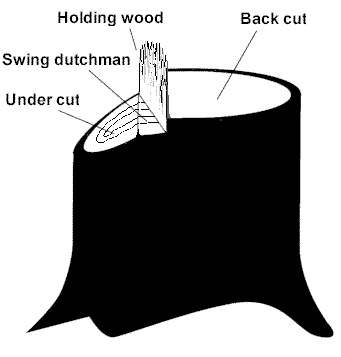
Etool Logging Manual Operations Felling Trees Making The Cuts Special Techniques For Felling Difficult Trees Unacceptable Practices For Felling Difficult Trees Occupational Safety And Health Administration
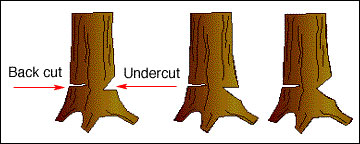
Felling Limbing And Bucking Trees Mu Extension
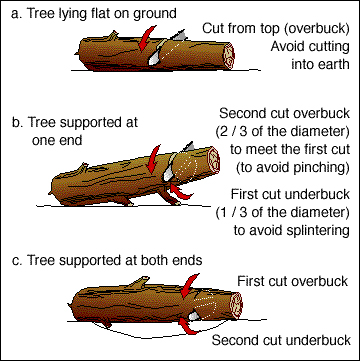
Felling Limbing And Bucking Trees Mu Extension
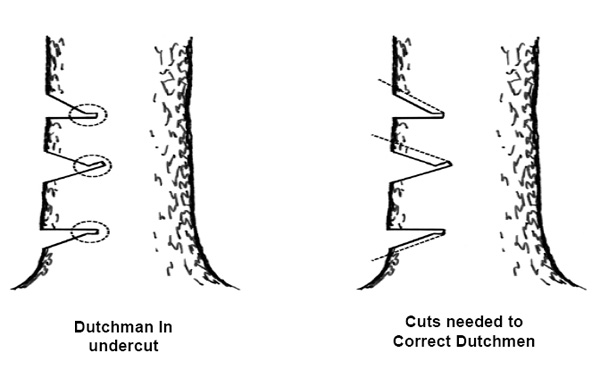
Colorado Firecamp Dutch Creek Incident Investigation Report

Chainsaw Safety Part 5 Tree Felling Cornell Small Farms

Tree Cutting Notches L Tree Removal Trimming Cutting Service L Bellevue Bothell Snohomish
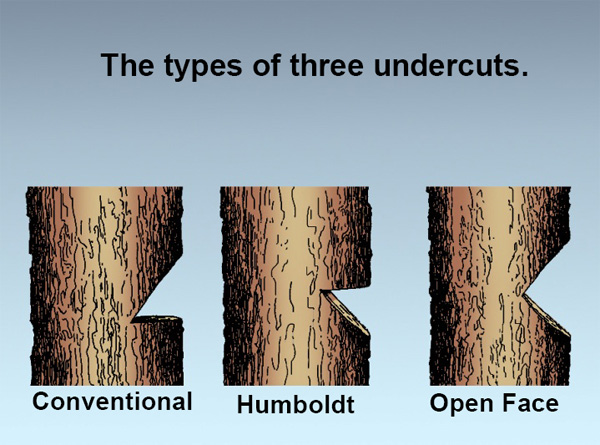
Colorado Firecamp Dutch Creek Incident Investigation Report
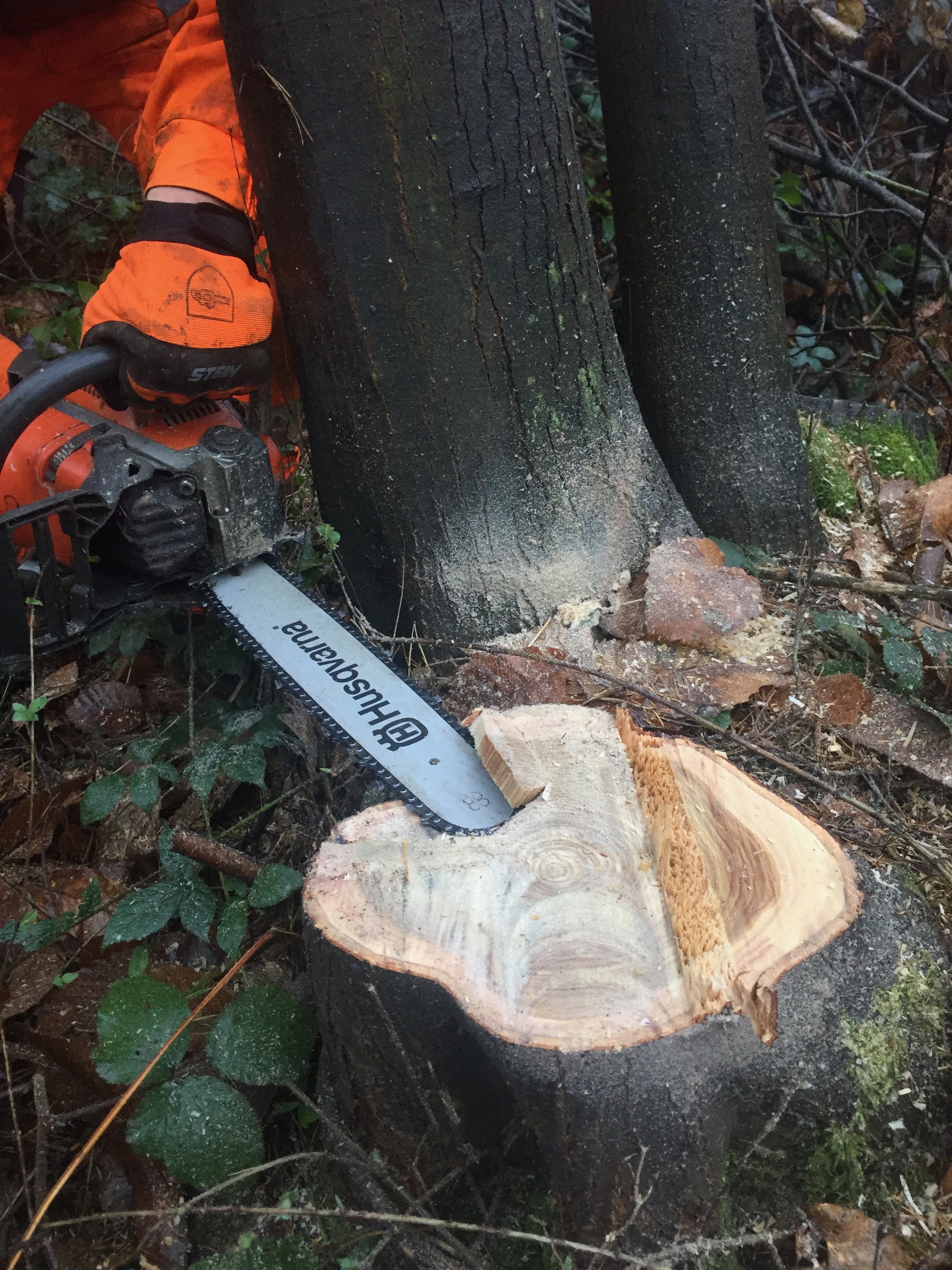
Small Tree Felling Cut Series Article 3 Scott Fraser Training
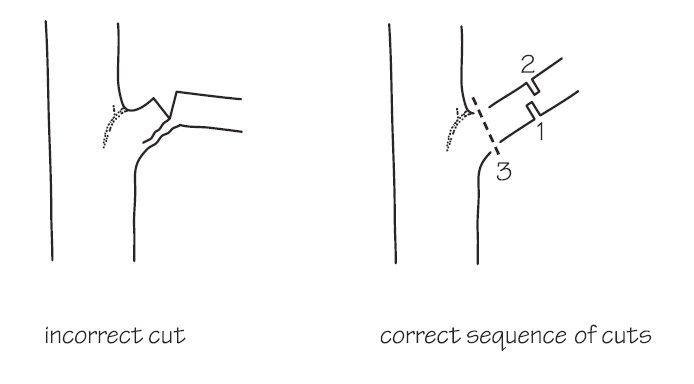
A Simple Guide To Felling Trees Up To 20cm Diameter
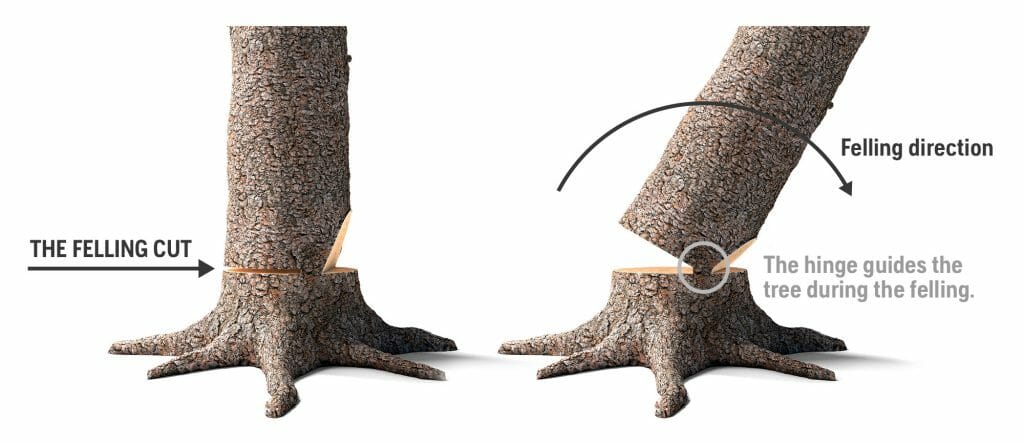
Understanding Directional Felling Husqvarna Chainsaw Academy
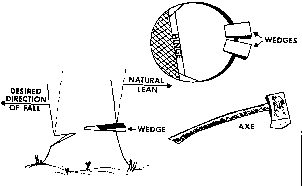
Etool Logging Manual Operations Felling Trees Making The Cuts Special Techniques For Felling Difficult Trees Occupational Safety And Health Administration
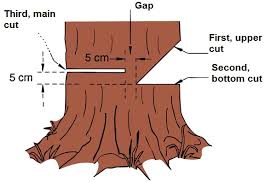
Chainsaw Safety Part 5 Tree Felling Cornell Small Farms
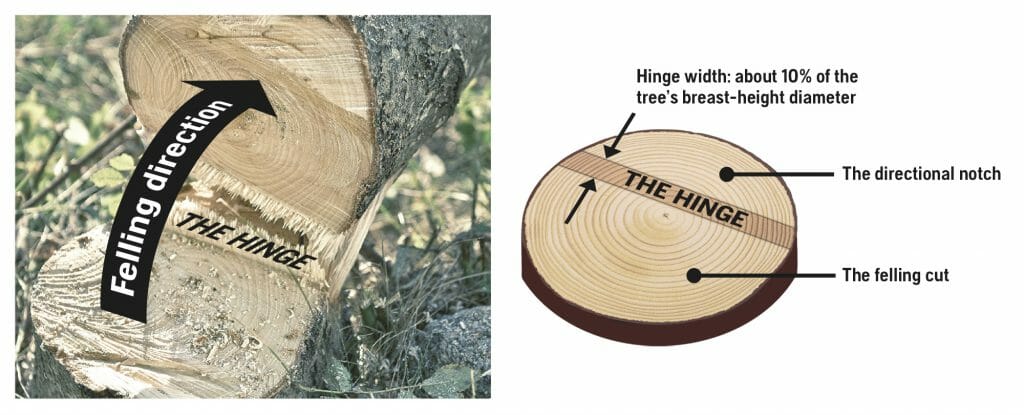
Understanding Directional Felling Husqvarna Chainsaw Academy
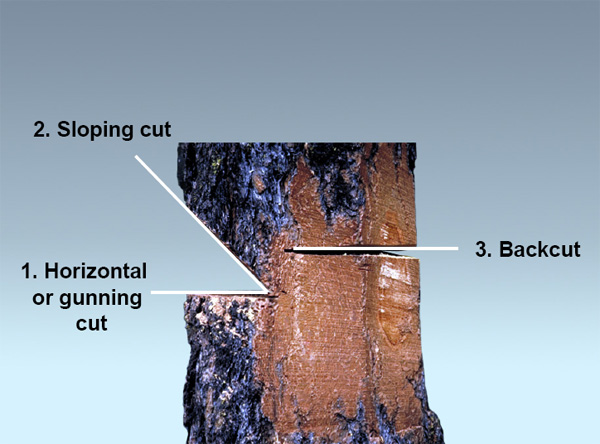
Colorado Firecamp Dutch Creek Incident Investigation Report
